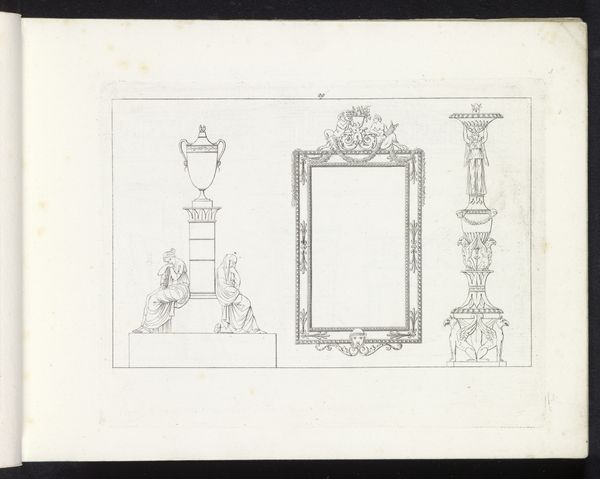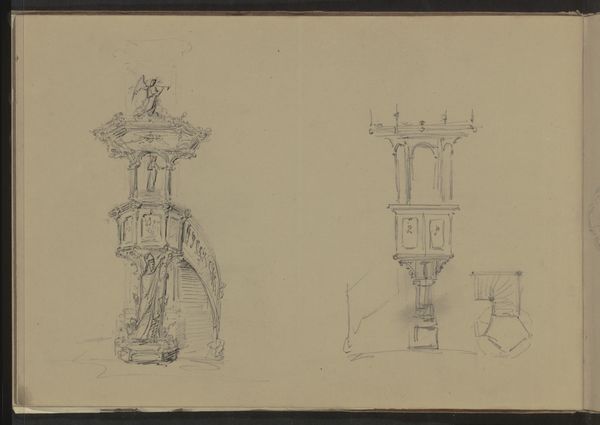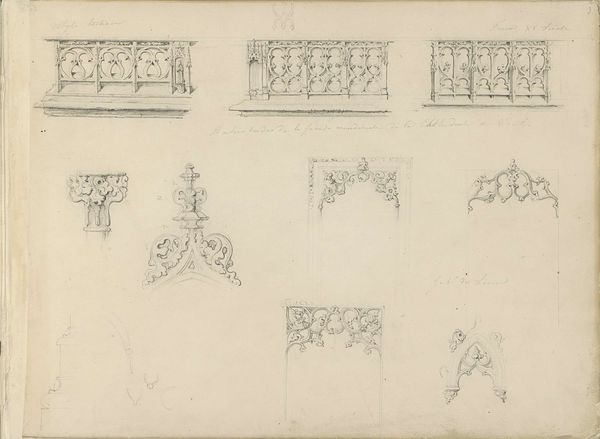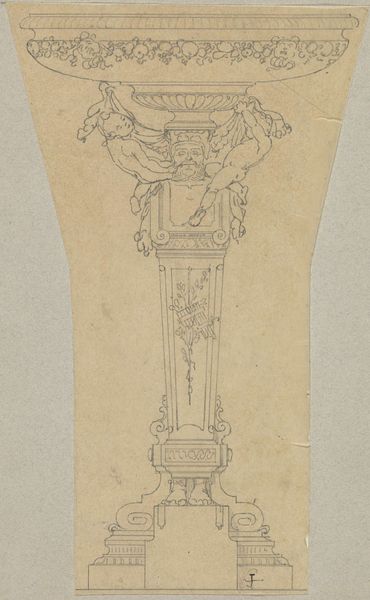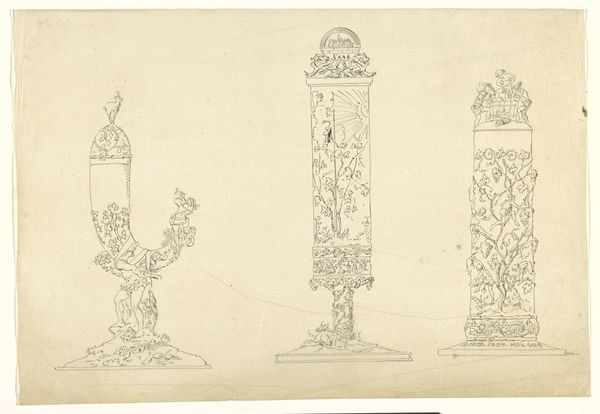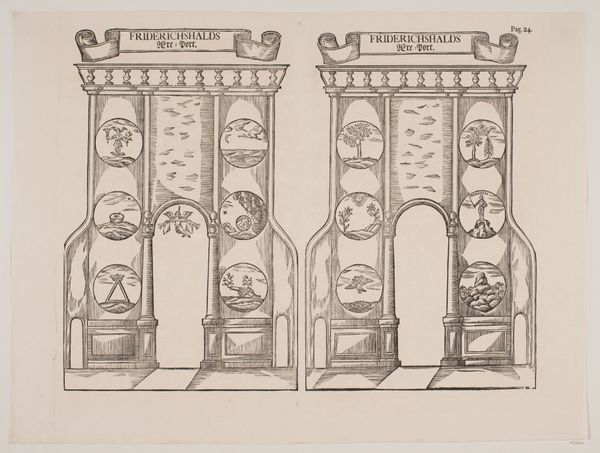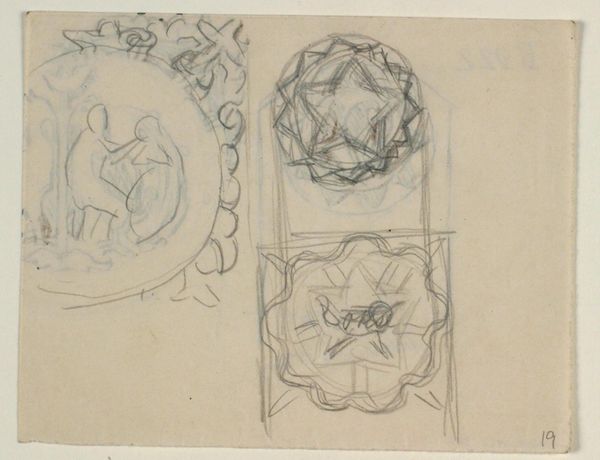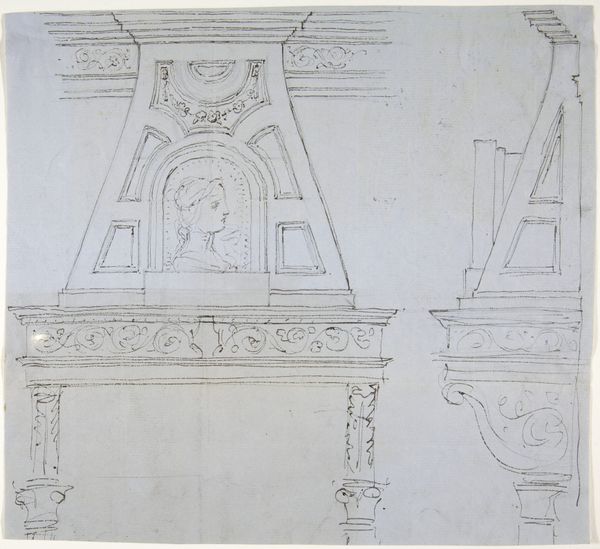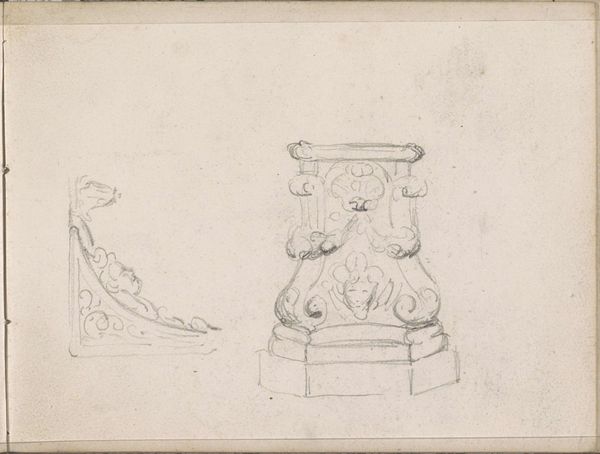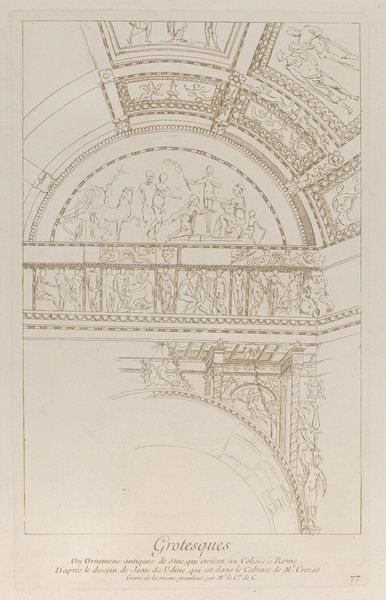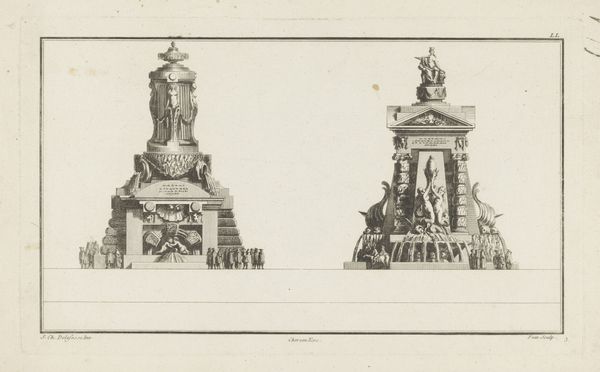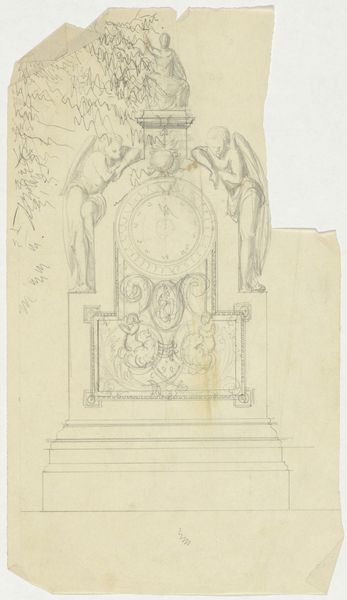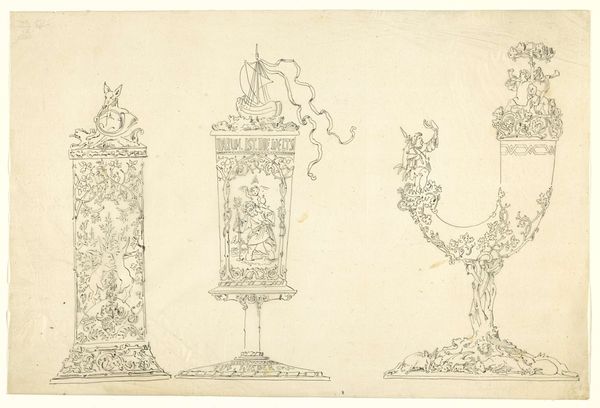
drawing, print, pencil
#
drawing
#
neoclacissism
# print
#
geometric
#
pencil
Dimensions: 10 3/4 x 14 11/16 in. (27.3 x 37.3 cm)
Copyright: Public Domain
Curator: This drawing, titled "Design for Three Clocks," dates back to somewhere between 1778 and 1799. It's housed here at the Metropolitan Museum of Art. Editor: It’s interesting. Delicate, ghostly, with three ambitious monuments struggling to come into being on the page. Like three pale gods wrestling for attention in my periphery. Curator: It's done in pencil and possibly some print medium. We don't know who the artist is, but the designs are decidedly Neoclassical, harking back to a vision of classical purity in design, emulating those formal, almost theatrical gestures and aesthetics. It speaks to the fascination with ancient forms prevalent at the time. Editor: "Ancient" is the word. The one in the middle feels like Atlas is really bearing the weight of all those centuries, not just a globe. What's remarkable is that these weren’t just time-telling objects but grandiose decorative statements. Curator: Absolutely. Clocks like these weren't simply functional items; they were symbols of status, power, and refined taste. Think about where these would be placed - grand rooms, opulent palaces, public buildings—a constant visual reminder of the owner's wealth and position within the socio-political landscape. And that’s always worth considering when we analyze pieces like this. Editor: Almost a propaganda of time, yes? A message that you controlled, measured, owned even, the precious, flowing now? It’s that combination of precise geometry and florid romanticism fighting against each other I find so intoxicating. Look how each is trying to have it both ways... Time, but make it epic! Curator: Precisely! They reflect an era steeped in rationalism, science, and burgeoning industrialization, but these designs also show a fascination with romantic aesthetics. Editor: You know, seeing them all together like this, it's less about clocks, more like these are portraits of time itself. Different moods, different costumes. And that rendering… the ghostly haze just emphasizes they only ever live in our imaginations. I find the sketch more arresting than the finished object could ever be, in many ways. Curator: Yes, as studies of design, they open our imagination, suggesting what life was like. It's a great way to imagine this period that helped define modernity. Editor: To sum it up, designs frozen in a moment where craft met ambition. You know… time, and tide, wait for no man—but someone, somewhere, really wished it wasn’t so.
Comments
No comments
Be the first to comment and join the conversation on the ultimate creative platform.
